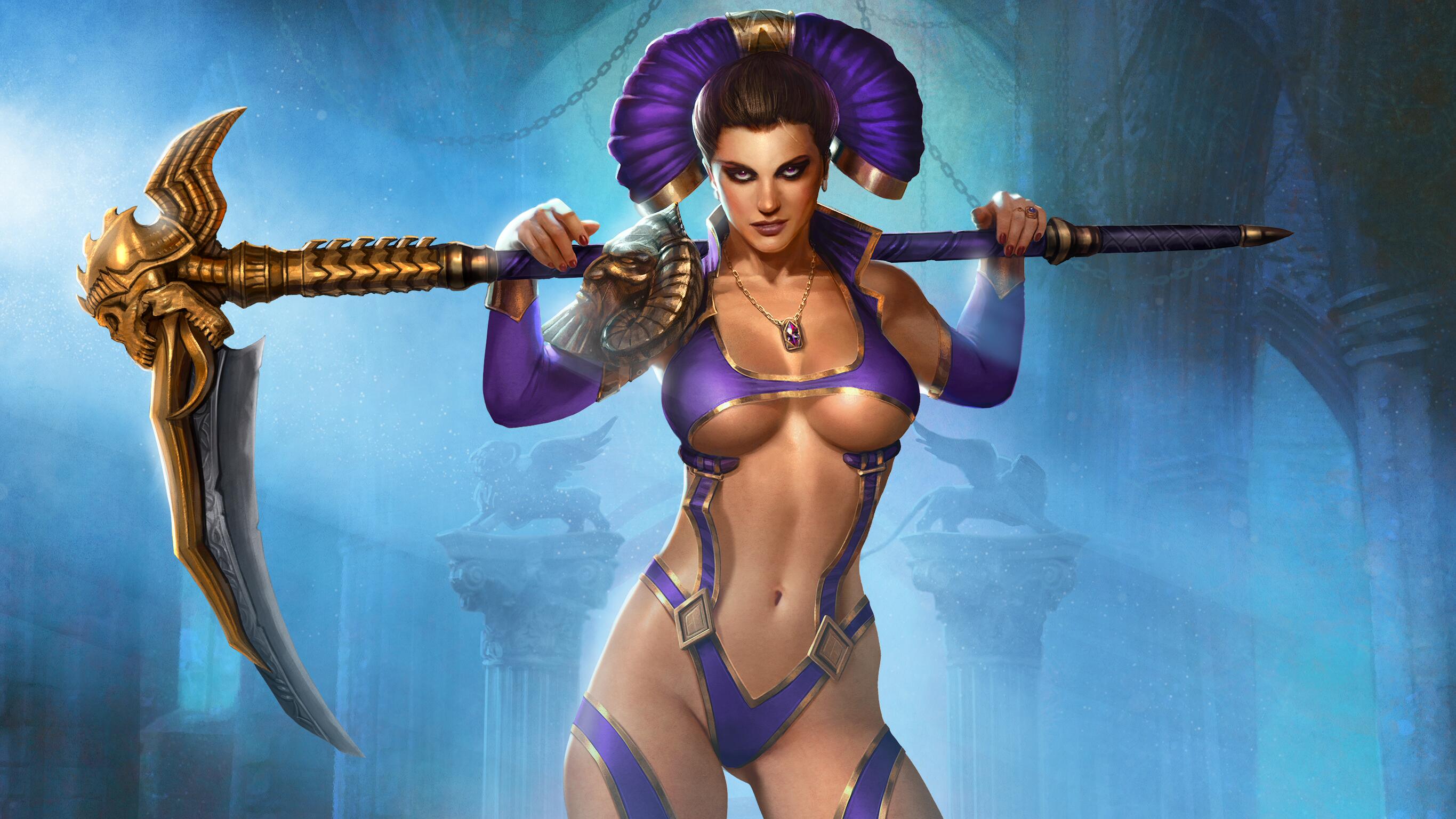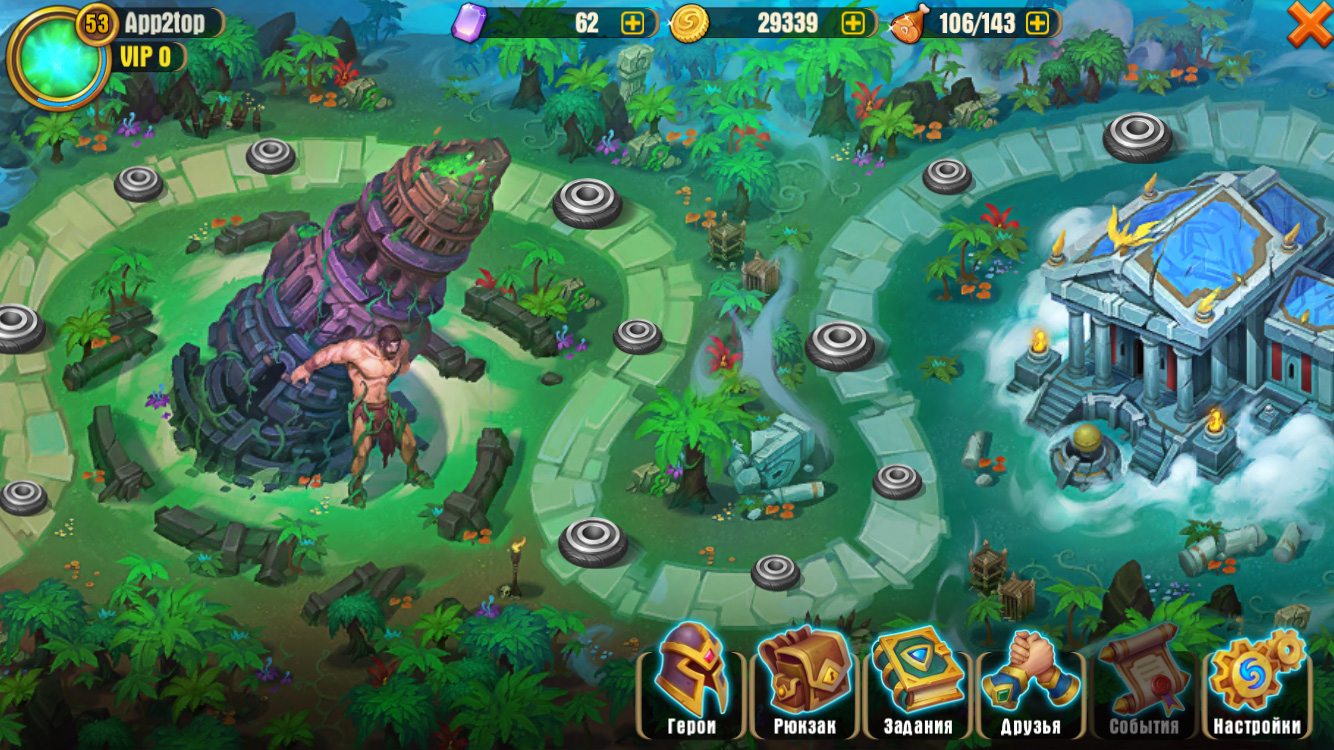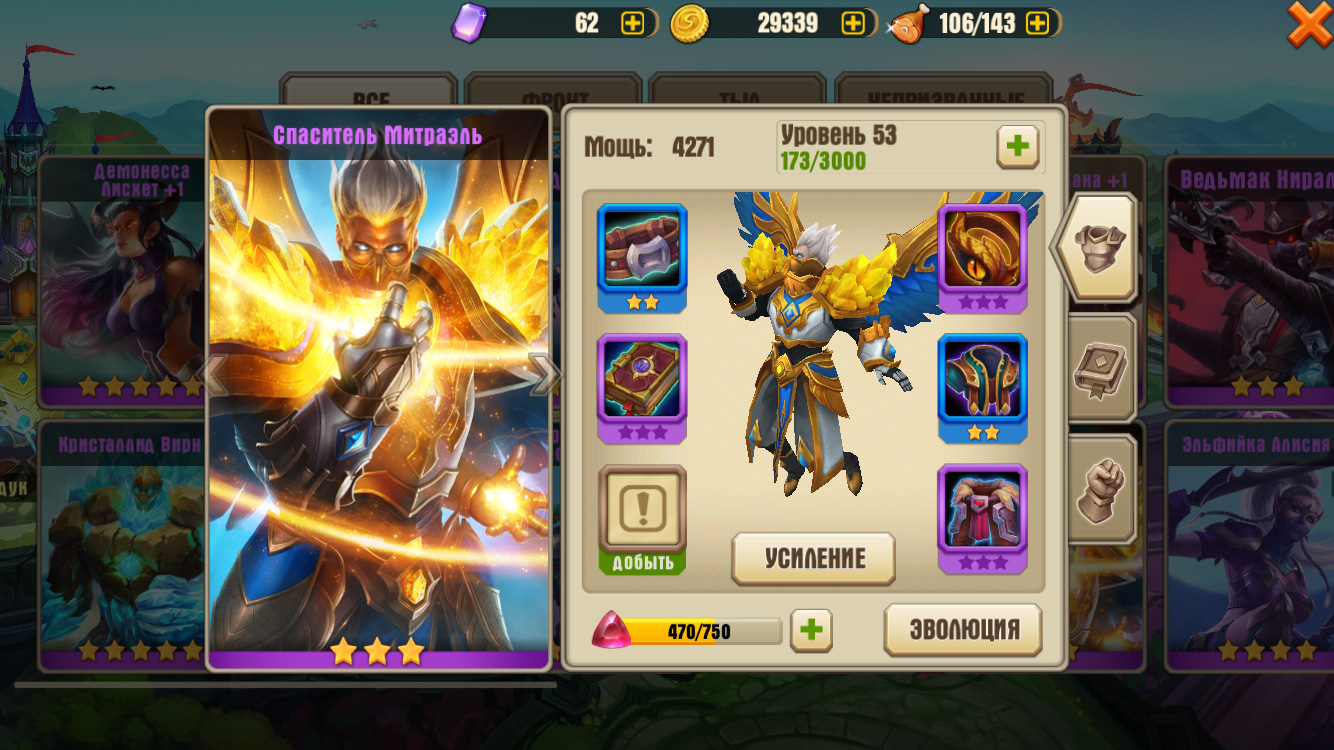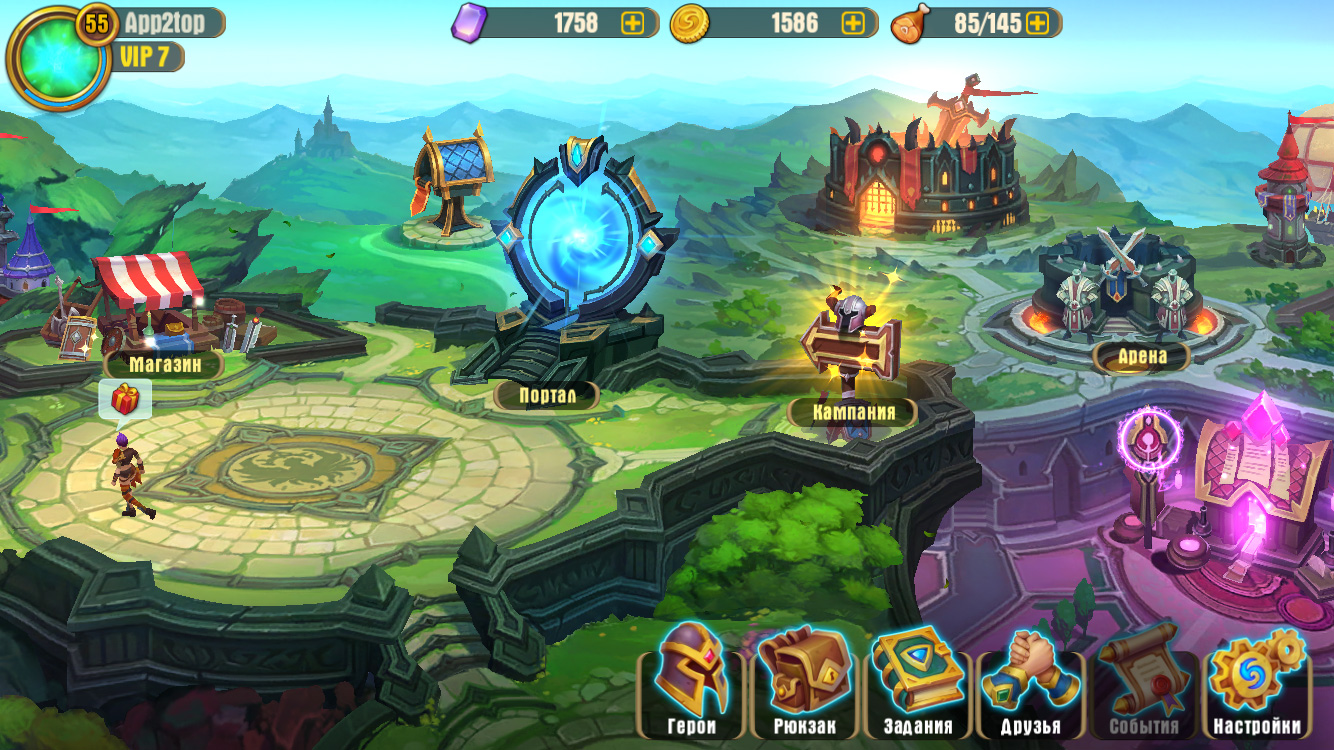A couple of weeks ago My.com announced a new game Juggernaut Wars. We talked about the game with the project manager Stanislav Antokhi.

Hi! Let’s start with a simple question. Tell us about your project, what is it?
Stanislav Antokhi
Hi!
This is a game in which the battle takes place between teams of 5 to 5 heroes. Before the battle, the player, having several dozen unique heroes, can choose any five to participate in this battle. The battle takes place in real time. The player can use super-punches at the right time.
The player’s success lies in choosing the right combination of heroes suitable for each situation. The difficulty lies in the fact that heroes can be pumped in several directions, so it is necessary to take into account not only the abilities of their heroes, but also their “pumping”.
This game is designed for iOS and Android platforms.
The subject of our pride is also the fact that, having very beautiful graphics, the game is quite undemanding to the hardware power of the devices.
How long has it been developed and by what forces?
The game has been developed since the end of 2014. The best forces of the mobile gaming direction are thrown at it Mail.Ru Group, the team size is about 40 people.
How are the roles distributed in the Juggernaut Wars development team?
There are a lot of specialists in the team, and each of them is practically irreplaceable. To be honest, I think I am very lucky to work in such a team. Team:
- Two producers – linear and creative,
- art director and art leads,
- 5 game designers,
- client and server programmers,
- usability specialist,
- concept artists,
- interface designer,
- 3D modeling artists,
- texture artists,
- animation artists,
- visual effects artists,
- marketing and PR specialists,
- network engineer.
What took/takes the most time for the team?
Most of the time, most likely, took two large parts: the development of the battle itself, which is a complex fusion of various game design and visual mechanics, and inventing / drawing the heroes of the game.
As an example, I can say that super-beats are visually accompanied by time dilation (the so-called slow-motion). The screen goes dark, all the heroes and the effects of explosions and flying projectiles freeze, only the figure of the hero who casts the super-punch moves. This required the concentration of efforts of the entire team, artists, game designers, programmers. And this is just one example.
Why did you decide to make a new game in the Juggernaut universe?
The Juggernaut universe has already given us 2 successful projects. More importantly, the players really like it.
First of all, it gave us confidence that the new audience would like it too. Secondly, it allowed us to count on attracting to our game those who played in the first “Juggernauts”.
At a time when new universes are blurring our eyes, it seems to us that the development and use of one world in games is no less a good option than inventing a new one for each project.
Juggernaut Wars has nothing to do with the previous parts in terms of mechanics, why?
We wanted to make a very specific game with collecting and pumping heroes and teams fighting each other. This mechanic fits well with PvP in mobile games.
By the way, why did you choose the Heroes Charge mechanics?
I wouldn’t call it Heroes Charge mechanics. There were games built on similar principles before that.
In general, we really wanted to make a game with collecting heroes, because we believe that such a game is very suitable for mobile platforms.
By the way, the first versions of the game had a campaign battle (again a reference to our previous games), but then we realized that continuous combat in real time is what we need.
Heroes Charge has a lot of followers. But even the highest-grossing ones, like League of Angels and We Heroes, are not particularly far from the original. How far have you moved away from the original, what, in your opinion, are the most fundamental differences between Juggernaut Wars and Heroes Charge?
In general, if it is believed that, for example, League of Angels is not far away from Heroes Charge, then the question becomes extremely interesting.
Our game is quite different from other similar games in many aspects. In fact, it is easier to list what is similar in it than vice versa. But I will try to answer the question.
We have very, very different mechanics of combat and its perception by the player, starting from the angle and style, ending with the laws by which this fight takes place. The biggest emphasis we put on the dynamics of the battle and the beauty of what is happening on the screen.
All the activities in the game are exceptionally original, while their advantageous difference is much lower requirements for time costs on the part of the player than in other similar games of the genre. We want players to play our game, not work in it.
We also put a lot of emphasis on simplifying interaction with the game by those who have not played such projects before.
The new Juggernaut Wars is not like the previous Juggernaut games, not only in mechanics, but also in art. Now the game is very similar visually to “Allods Online”. How did it happen?
If this is the case, then it happened by accident, since there was no goal to make the game look like “Allods”.
There was a goal to make a picture that you want to look at again and again.
We worked out the style of the game so thoroughly that we redrawn the sets of heroes several times almost in the final quality.
These options were just located between the style of the first “Juggernaut” and what you call the style of Allods. We looked carefully at all these options and chose the one you see now.
Does it mean that future projects in the Juggernaut universe will be executed in the same new style?
Not at all, from our point of view, there is nothing permanent and unchangeable in game development.
Returning to the mechanics. Juggernaut Wars is not a skill-based game. You can even turn on auto mode here. Why then such attention to the action, which you quickly begin to put on the machine, or even skip for energy?
I would disagree with the fact that the game is not skill-based. Rather, it is as skill-based as the player wants to see it.
Our game can and should be played for fun and relaxation.
But you can’t even imagine what arguments and disputes occur between the top ranked players! They often argue about different team structures, advantages and disadvantages of using certain fighters. So it seems to me that the game is quite skill-based.
Such players put their whole soul and all their creativity into the fight in an effort to become the best in it.
We, as developers, could not help but do the same. It was the battle that we devoted our maximum efforts to.
By the way, have you monitored how popular is the autoboy button, which passes for energy, fights? Can you share data about its popularity, how much does it stimulate purchases?
I would say that the autoboy button does not stimulate purchases, and this was not the purpose of its appearance. This is a button that allows you to separate routine fights from really important ones, those that require the player’s attention.
As for purchases, players most often pay for interest, and not for facilitating their game with the help of autoboy.
It is these types of purchases that we value most of all and only try to do them. This is the best recognition by the player that the game brings him pleasure.
On what, in general, money is most often spent in the game, and which element does the game “earn” the most money? And what, on the contrary, is not popular?
Most of all, players like to acquire new heroes and equipment (but these purchases do not occur explicitly). And this is not surprising, the biggest interest of the game is precisely that you get a slightly different game every time you have a new hero.
Each of our players, including me, had the following situation. There is, for example, a hero whom I considered not very strong and practically did not use him. But then an opponent appears who, using this hero in a beautiful and unexpected combination, demolished me in the Arena into trash. And that’s the beauty of this game. All heroes are useful, you just need to be able to see it.
The game has been in a soft lunch in Russia for a couple of months now. What have you managed to find out about the project during this time: what do users like about it, and what is it time to abandon?
There are some points that we will change in the game. We wouldn’t have been able to do this without user feedback.
In general, the players react to the game exactly as we had hoped. They really like the fight and they very correctly grasped the idea with the purposes of various heroes.
Why Russia was chosen as a region for a “soft launch”. It is also considered a highly profitable region. And you are experimenting with launching it.
I mean, are we experimenting?
We are experimenting on testing, and a launch is a launch. We have released the project to Russia in the final quality. Such a project, in which we are confident. Russia is our home market, so the last thing we would do would be to put risky experiments on it.
We probably have slightly different understandings of “soft launch”.
Naturally, there is no limit to perfection, but the desire for it has nothing to do with geography.
Finally, I left a philosophical question. It is connected just with the action, which the player may not follow at all. How do you feel about the fact that today we can play while watching TV or having lunch at the same time. Or, you pressed the button, went for tea, came back with a cookie, and in front of you are the results of the fight. He pressed the button again, went about his business again. The game turns from entertainment into a routine, no?
I profess the following paradigm: the more opportunities there are in the game for different styles of play (from one-button style to maximum involvement), the better. In our game, there are just such opportunities. The player determines the degree of involvement for himself. But, of course, all games are different, and any principles should be applied to them with caution.
Thanks for the interview!






